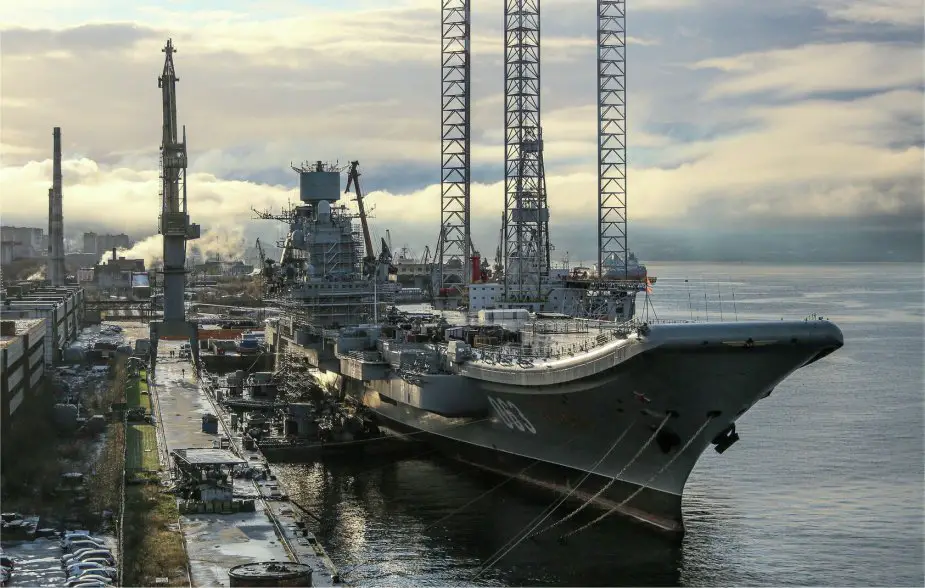Breaking news
Russian aircraft carrier Admiral Kuznetsov will begin dock overhaul.
According to information published by Tass on July 20, 2022, the Admiral Kuznetsov aircraft carrier will begin dock overhaul at the 35th shipyard in Murmansk in the coming days.
Follow Navy Recognition on Google News at this link
 Project 1143.5 aircraft carrier Admiral Kuznetsov (Picture source: RIA)
Project 1143.5 aircraft carrier Admiral Kuznetsov (Picture source: RIA)
Sevmash Shipyard CEO Mikhail Budnichenko told TASS his shipyard would build a caisson in 2022 for the 35th shipyard to overhaul the aircraft carrier Admiral Kuznetsov.
About the Russian aircraft carrier
Admiral Flota Sovetskogo Soyuza Kuznetsov is an aircraft carrier (heavy aircraft cruiser in Russian classification) serving[clarification needed] as the flagship of the Russian Navy.
She was built by the Black Sea Shipyard, the sole manufacturer of Soviet aircraft carriers, in Nikolayev within the Ukrainian Soviet Socialist Republic (SSR) and launched in 1985, becoming fully operational in the Russian Navy in 1995.
The aircraft carrier has a length of 305 m (1,000 ft 8 in), a beam of 72 m (236 ft 3 in), and a draft of 10 m (32 ft 10 in).
Admiral Kuznetsov's main fixed-wing aircraft is the multi-role Sukhoi Su-33. It can perform air superiority, fleet defense, and air support missions and can also be used for direct fire support of amphibious assault, reconnaissance, and placement of naval mines. The carrier also carries the Kamov Ka-27 and Kamov Ka-27S helicopters for anti-submarine warfare, search and rescue, and small transport.
For take-off of fixed-wing aircraft, Admiral Kuznetsov has a ski jump at the end of her bow. When taking off, aircraft accelerate toward and up the ski jump using their afterburners.
This results in the aircraft leaving the deck at a higher angle and elevation than on an aircraft carrier with a flat deck and catapults. The ski-jump take-off is less demanding on the pilot, since the acceleration is lower, but results in a clearance speed of only 120–140 km/h (75–87 mph) requiring an aircraft design that will not stall at those speeds.




























